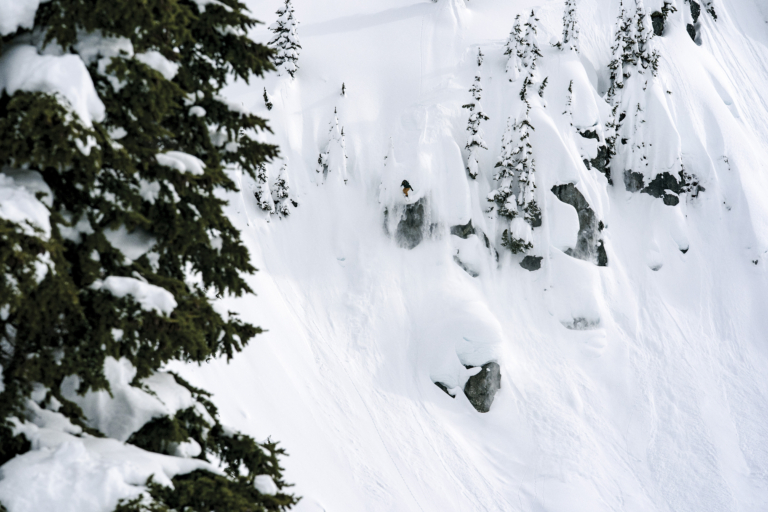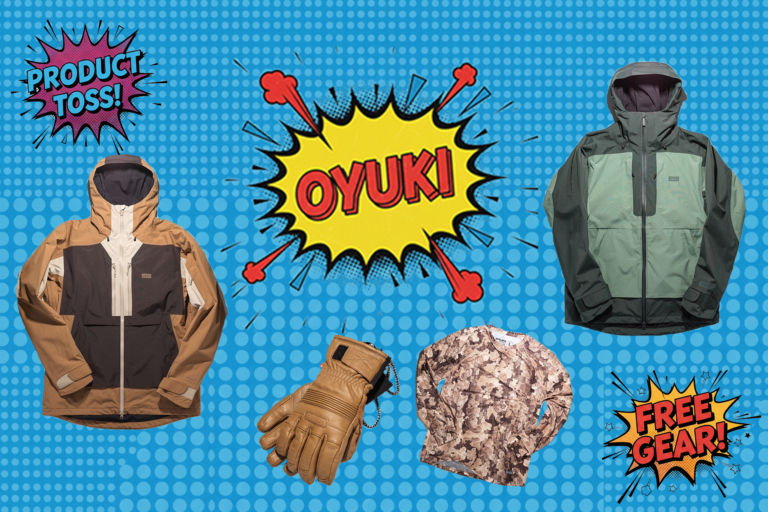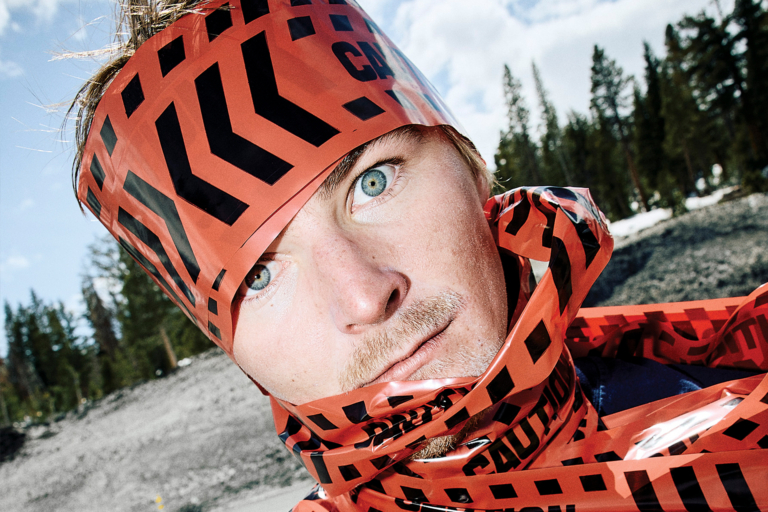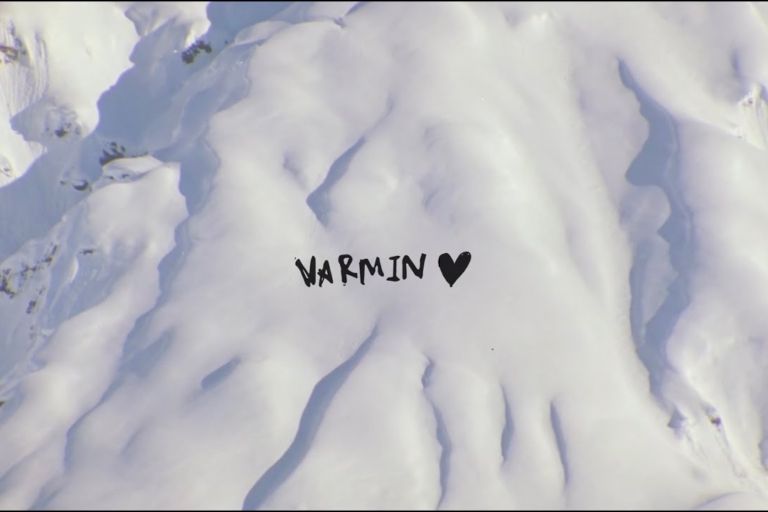On Tuesday evening, October 5th, I joined a Zoom chat with thirty other women from all over North America. In tiny squares on the call display, friends sat together on couches, Moms cuddled up with their daughters, and ladies called in from rooms with snowboards on the walls, all eager to listen to Shawna Mayo, a Never Summer team rider and wildland firefighter, talk about her experiences. The virtual event was part of Never Summer’s discussion series, Women Empowering Women, which is hosted by NS marketing manager Mary Lenefsky and focuses on a different topic every month throughout winter. Shawna, who is based in North Lake Tahoe, was wrapping up fire season in preparation for cold weather—dusting of her snowboard boots to explore the backcountry and compete in the Freeride World Tour Qualifiers. She called in from a hotel room in Washington where she was leading a fire crew with multiple engines. She’s a boss, both in the literal sense, as well as figuratively.
This year’s fire season, Shawna says, “was one for the books.” Fire broached the Tahoe Basin, forcing evacuations and affecting resorts. It’s the efforts of Shawna and her coworkers that helped to mitigate blazes like Caldor and Dixie, though what is further impressive is the overarching work that Shawna has accomplished to get so far doing something she loves so much. Wildland firefighting—as well as structural firefighting, which means the crews that protect towns, cities, etc.—is a dangerous, physically demanding, and mentally and emotionally challenging occupation, which makes it even more striking how upbeat and gregarious Shawna is as a person. She is clearly passionate about working in fire, and the same passion fuels her snowboarding.
As a complement to the NS discussion, we caught up with Shawna to learn more about what she does as a firefighter, how her experiences in fire overlap with snowboarding, what it is like to be a woman in her field, and how she deals with the mental and emotional stress of such a demanding job. Read on for her perspective and for more, follow Shawna on Instagram at @mayohmy.

First off, where are you from and how did you get into snowboarding?
I’m from Canby, a small country town Oregon, where football is the hottest thing on a Friday Night, fun includes driving beat-up cars in the orchards when it rains, shooting guns, hanging out in fields, and going to rodeos. I was always curious about snowboarding throughout high school and early college, but actively pursued it during the 2012-13 season. Being a collegiate softball player and pursuing a career in fire were my primary focus up to that point, but I met a few rad girls (Claire, Joanna, and Natalie) that really turned me on to the sport. Snowboarding was so different and freeing! When my mother passed away in May of 2013, I felt it necessary to continue pursuing the things she had always supported me in. For instance, I look back on photos from my fire academies, first rail jams, and adventure shots just to read her comments. It reminds me she is constantly with me in these endeavors I pursue.
How did you become interested in fighting wildfires and what was your path to this job?
I became interested in fire in 2006 when I was a sophomore in high school. I did a job shadow with the Canby Fire Department in my hometown. When I saw there was a girl on the crew, I thought, If she could do it, I can do it. For me, it was just another opportunity to participate in something male-dominated that I thought was rad and awesome… I even played men’s football! I’m also an adrenaline junky, in case you haven’t noticed. So, I started my career in fire by attending a Cal-Fire basic 67-hour academy in the spring of 2009. Since then, I have done a mix of alternating between wildland and volunteer structure firefighting. For those of you wondering, a wildland firefighter is an individual who typically fights forest fires in the summer months, while a structure firefighter is an individual who responds to house fires, vehicle accidents, and medical calls. Volunteer just simply means unpaid or paid by call; it is common in rural areas and makes up 67% of all firefighters in the US.
What is your official role and what does it entail?
I am a LOFR/STEN, which stands for a Liaison Officer and Strike Team Engine Leader. I am also an Engine Captain (“Boss” in NWCG terms). I have previously been on crews and other types of engines as well. The typing runs from Type 1 (example: a structure fire truck, like you would see responding to a house fire in your neighborhood) to a Type 6, which is a pick-up with a small water tank. On Response, I act as a point of contact for my agency, get approval for my resources to be on the fire, coordinate the operational aspects, allocate assignments based on need, and ensure resources are doing what they’re supposed to do, safely. When I’m an ENGB, I lead an engine of crew members and utilize items such as digging line, putting in hose, securing and prepping neighborhoods, moping up, etc. The job is dynamic, always changing, and demands differently from you, but that is half the fun.
How does the seasonality of fighting wildfires work with/compliment that of snowboarding?
It’s a marriage made by the gods. Seriously, think about it: For six to nine months I get to crush the summer, travel, make a lump sum of money, work away my weekends…but save for my favorite season. Then in turn, I get to take three to six months off in the winter, travel the world while snowboarding, camping, backpacking, competing, etc.! It’s absolutely glorious. I haven’t had a true summer in years, but I know in the winter, I get to just focus on the thing that makes me whole: travel, adventure, and life experience. Snowboarding just happens to be the catalyst for those goals.
How long have you been competing in the Freeride World Tour Qualifiers? How has that experience been?
I have been a part of the FWQ since 2019. This question makes me laugh because the first comp I ever did, I decided to ride with no fear, launch a cornice, and dislocate my shoulder (full tomahawk) due to sticky snow. Ohhhhh, did I learn! 2020 was my first real year spending a full season competing. As far as the experience, I love the travel and the people! As an individual who didn’t really start snowboarding till 2012, I still have much to learn about technique, feel, drive, progression, etc.! I learn something new at every competition I go to about my own riding, but I predominately learn the most while watching others! What features are in play, what style looks the best, and where my own riding is lacking. I’m pretty self-aware; I know I’m nowhere near being the best, but I sure enjoy watching some of the best compete. I’m constantly learning, absorbing, and evolving into a rider that will hopefully be in that category at some point in my lifetime! I view snowboarding as I do firefighting—the day I think I know it all, I no longer deserve to be a part of it.

When it comes to overlaps between fighting fires and snowboarding, where do those lie for you?
The overlaps from both seasonal activities can always be quite interesting. At times, I get to go on hikes in areas I may go into the backcountry in the winter, which allows me to gain even more knowledge about some of my favorite spots. But mostly for me, firefighting helps me see the terrain in a different aspect. I can look at a saddle, false peak, box canyon, or a chute and already have a good general idea of how the snow will pack, travel, and slide. Obviously, there are always variables and circumstances out of our control, such as weak base layers, wet storms, etc., and conditions can always change.
Fire is a job that certainly teaches you how to calculate your risk and stay on top of the re-evaluation process; the key is to keep your situational awareness up, to constantly re-evaluate based on current and expected behaviors and conditions, and be willing to pull out due to safety. I also have gained so much knowledge from fire over the years when it comes to navigation, maps, and overall wilderness preparedness, from medical emergencies, overnight camping, animals, and emergency egress. I feel allows me to be better prepared for things I may face while snowboarding.
This year, fires blazed in and around the Tahoe Basin. What was the experience like fighting these fires that were affecting the community in which live?
I moved to South Lake Tahoe in 2012 to attend the Fire Fighter 1 Academy that was based at the Christmas Valley Stations. When I graduated that academy in June, I then went on to work with the USFS (United States Forest Service) for a handful of years and was based out of the station next. Having spent so much time there, Christmas Valley is especially very near and dear to me. I know the entire area quite well, thanks to year-round adventures, from climbing the Phantom Spires, riding Sierra-at-Tahoe and Kirkwood, backpacking in Desolation Wilderness, camping at Red and Blue Lakes, exploring Hope Valley, and enjoying the many wonderful things those Hwy Corridors have to offer. I have a few dozen friends that live in Christmas Valley and Meyers, and even more who live in South Lake. This fire became quite personal for me.
This fire season has been one for the books. I started my fire career in CA in ‘09 and watched the intensity and duration change due to many factors that we can always discuss at another time…but regarding the Caldor Fire specifically, it’s simply hard to stop a freight train. Due to smokey conditions, air resources are difficult to use, heck, to even know where the fire is actively burning for ground resources. Fire behavior is extreme, hard to predict, and even harder to control, while resources are thin and fuels (trees, shrubs, grass, etc.) are critically dry. It’s just a melting pot to create a bad situation.
Fire can be at times unpredictable, unprecedented, and downright nerve racking and scary. I was an Engine Boss on the Camp Fire, which destroyed the foothill town of Paradise, and allowed me to understand the potential of wildfire in the Wildland Urban Interface (neighborhoods where wildfire can impact them). I had friends in Paradise lose everything and I also had friends that lost everything in Greenville this summer due to the Dixie Fire just weeks prior. Last thing I wanted to see was a community that had meant so much to me be destroyed in front of my own eyes.
I was a Strike Team Leader and Liaison Officer on the Caldor. As the fire progressed along the Hwy 50 corridor, we inserted our resources around the communities to protect them. We then relocated into Christmas Valley area to prep the area for the fire front to spot into the valley, while my coworker was in Kirkwood with his assigned resources doing the same. Due to collaborative efforts of all assigned resources and agencies, everyone was able to keep the damage to a minimum and steer the fire away from a large part of the communities.
It’s interesting fighting fires when it impacts the people you love and care about. How it influences our fight or flight, our compassion, and our drive to protect the things that our loved ones value. At the end of the day, yes, a house can be replaced. However, human life cannot. Ensuring the safety of the public, as well as the responders, is the goal. I’ve been very blessed over the years to not have lost a member of the public who happened to be someone I knew. The same cannot be said for the fire fighter side of things, as I have lost half a dozen. I was on the USFS Crew out of the Tahoe Basin years ago, and we lost a brother (his name was Mikey Hallenbeck) to a hazard tree during a fire at Sierra-at-Tahoe. Working and driving past his sign for multiple days in a row while on the Caldor Fire really put things into perspective about this job.
Were you involved in any of the mitigation for the resorts in South Lake? (The use of snowmaking machines at Sierra was amazing!)
I was not involved in any direct defense of the Ski Resorts in South Lake. However, it is brilliant to use the snow guns to protect the resort! Crews will implement sprinkler kits around homes to protect them, so you could view this approach as a much larger sprinkler kit.
Correct me if I am wrong, but there must be a lot of stress, emotions, etc. that come with such an intense, consequential job. How do you deal with it all, stay calm, and do what you need to do to help protect the wildlands and communities? Mental toughness must be paramount to be in your line of work.
I think the art of staying cool, calm, and collected comes with experience. I think you become more comfortable with the unknown and you learn to address those adverse situations in a clearer way. As a first-year firefighter everything is overwhelming, new, and sometimes scary. As the years pass, accidents happen, near misses occur, people get hurt, fires get intense. You find yourself saying, “I’ve never experienced fire behavior like this,” again and again. You just learn to approach situations with a calm thought process and create a plan A, B, C, and D—because odds are, you’re going to use them all.
Regarding mental fortitude, I feel as though that is something, as an industry, we need to all address: Wildland fire fighters work extremely difficult schedules with low pay—some without benefits like retirement, adequate sick leave, injury assistance, and more. For four to eight months, we are expected to leave our families at moment’s notice for weeks at a time. This puts a ton of pressure and stress on the home life. We come home for a couple days, maybe a week, and go right back out. We go from a high adrenaline job to a slow winter or jobs that aren’t as exciting, which can be depressing and unsatisfying. With all of the stress and pressure, it can be overwhelming. Mental health is a serious problem among wildland fire fighters and needs to be addressed.
I’m grateful for my current agency to have an EAP/Peer Support Program. I feel those are rare. I’m a part of our Peer Support, and it gives me a lot of relief knowing that I can be a voice for these guys and gals to reach out to in the off season. Perhaps they miss the line of work or are dealing with home issues—whatever it may be, it is great to be that support and know we have those resources available.
I personally balance my mental health by engaging in adrenaline-based activities in the winter such as snowboard, hockey, indoor climbing, and more. I find time to get into the gym daily and have “me” time, as well as get body work done to ensure I’m at my prime. I also pay attention to how I fuel my body adequately and be cognitive of the amount of alcohol I consume. I surely do love a good whiskey, though! But it’s all about moderation and ensuring you have positive outlets for stress and energy.
Do you find any correlation between the mental aspect of fighting fires and the mental aspect of riding in the backcountry (or just snowboarding, in general)?
I think all lessons in life can be interchangeable. That cool, calm, and collected mindset I mentioned from firefighting is imperative to snowboarding as well, especially if something unexpected happens, such as an injury or a lapse in judgement. To be able to use one set of tools in a completely different light is always amazing. It’s important to keep your situational awareness up, know when to call it if something isn’t right or you’re feeling off, and know when to take a “you” day for mental wellness when you have run your body into the ground.
The day-to-day of fighting fires must change dramatically depending on the situation, but could you walk us through a little bit of what an average day may entail for you during fire season?
You hit the nail on the head with that one; days can change drastically from one to the next. When we are not actively on fire, a typical 8-hour workday start with an all-hands meeting where we discuss fire weather forecast, the daily plan, staffing levels, etc. After the AM briefing, we participate in physical fitness for at least an hour—anything from yoga, running, hiking, and lifting weights. We usually train for a handful of hours prior to lunch to ensure we are fire-ready during the peak burn period (between 2-6pm). After lunch, we engage in area familiarization and stay available for fire response. We typically wrap up any day doing engine or crew buggy details, paperwork, etc.
During fires, the days are evolving. I typically start at the 0600 or 0700 AM briefing with all assigned resources. Head to a meeting location, known as a drop point, typically, for specific work assignments. Then work that assignment all day until incoming resources come to relieve you. Some schedules run a 16-on/8-off. Some schedules work a 24-on/24-off. It just depends on what state your response is in, who you work for, and what the contract states. Those tasks can range from fire suppression, indirect line construction, structure protection, water delivery, hazard mitigations, etc., and vary daily based on the need.
What is Camp Blaze?
Oh, I am so glad you asked! It is one of my favorite things to be a part of. Camp Blaze is a week-long, non-profit young women’s fire camp based out of Washington. There are twenty-five campers and an all-female instructor cadre. It’s a fantastic time. I found out about this gem through one of my chiefs back in 2015 when I was a volunteer fire fighter for Black Rock City FD (yes, Burning Man has a fire department).
My first camp was in 2016, and it was everything I had hoped for and more. It was seriously empowering! Not only does it offer an avenue for young women to participate in something previously known to be only for men, but it also gives them the tools to be successful, not only in firefighting, but in life. If these girls come to the camp and decide fire is not for them, that’s fantastic. They just learned about themselves, their strengths, how to overcome their weakness, and can now carry that into life anywhere they go. However, if they do decide fire is for them, then we just added another sister! It’s also equally as important for the staff, the instructors, the volunteers, the board, etc. It allows us to be at an event that empowers young women, surrounded by strong and empowered women—which, especially in the fire service, can be hard to come by.
These camps have started popping up all over North America and even other parts of the world! I just completed one in Anchorage, Alaska called Northern Lights and Sirens. I’ve been to Sacramento, San Fran, Ventura, etc. to help as an instructor. These camps are super rad and it’s all about giving women the chance to try something they might not have otherwise and build confidence. I love being a part of it and look forward to these events every year!
What is it like being a female wildland firefighter, especially in a high up role?
Challenging. I had to sit and stew with this question for quite some time. Yes, I even walked away and grabbed another coffee so I could think clearly. So here we go…
Being a minority in the fire service is not easy. There are many challenges you face on any given day, with differing resources and mixed personalities. At times, you work for individuals who believe women don’t belong in the fire service—they believe the world went to hell in a hand basket the day woman could vote, and they live in the good ol’ boys club. It can be demoralizing. Frustrating. Exhausting.
The number of women in elevated roles such as captain or higher make up probably a quarter percent of all women in the fire service, and that’s just a guess on my part. Have you ever heard it’s lonely at the top? It’s an interesting topic. As a female, I feel as though sometimes I must wear different hats. You see it in this interview. When we talk about snowboarding, it’s free-flowing and from a place of pure, unfiltered excitement. When we talk about fire, I love it and am excited and passionate, but I feel I’m under a constant microscope. If I make a statement that is in layman’s and not technical terms, a male coworker or fellow firefighter could view me as uneducated and inadequate. I have been influenced to dye my hair because of the differences in treatment when being blonde verses brunette. I constantly watch what I wear to not be viewed as a sexual object during physical fitness training. I dropped my voice a few octaves to come across with stronger, commanding presence, to not be viewed as ditsy, feminine, or young, as I constantly deal with individuals who do not want to take direction or work alongside a higher-ranking female.
I think another key component involves women, specifically. Some of us are particularly strong! Strong physically, mentally, emotionally! We were brought up in an environment where we have had to be perfect. Some women come into this profession not being 100% sure if this is even what they want to pursue. I have seen firsthand women demoralize each other when we need to be strong for one another, support and build each other up, and work together to make failures, successes.
The goal is to protect life, first and foremost. I am a full believer that a diverse workforce allows you to accomplish that goal in the most efficient manner possible. It’s not about changing physical standards or expectations, but rather about creating equal expectations for exceptional service across the board for all members. To create an environment of growth and open communication. To hold one another accountable for unacceptable behavior and allow individual weaknesses to become strengths through mentorship and constructive criticism. This allows the fire service as one team to become even stronger.
Whew, that was long-winded, but I hope it covered a bit of the challenge as well as the potential it has to be better.
Are there more and more women joining the ranks of wildland firefighters each year?
Statistically, around 10% of wildland firefighters and around 8% of structural firefighters are women. So, I can say that the percentages are rising, but we still have a long way to go. Diversity in the fire service needs a boost. It’s important to represent the communities in which we serve. We can relate to those who have different religious beliefs, speak a different language, observe different customs, and follow a different set of rules that may differ from our own upbringing. Having a diverse workforce allows us to reach a common objective in the safest and most efficient manner possible.
In a world where fire season seems to become scarier every year because of the effects of climate change, is this a motivating factor for you to step into your fire boots every season?
Climate change, climate adjustment, an Earthly cycle…Whatever we want to call it, it is happening, and we aren’t ready for the consequences. Regarding your question specifically, oddly, it motivates me. I think it is key for those with the knowledge and the years under their belts to stay and continue to fight. The main reason being to train those below us. We’ve watched the seasons change, the behavior intensify, tactics that we once used become ineffective and inefficient. I believe it’s going to take a mix of all abilities and experiences to be able to tackle this new fire season we’ve been seeing. I love this job, seriously. It’s my longest relationship. If you ask anyone, that’s saying a lot for me! Even though at times I don’t like it very much, I ask myself why I’m here, or if I can go elsewhere to be more financially stable, but I always come back. Some of us are just wildland firefighters at our core, it’s what we love, and it is what calls to us.

How long have you been a part of the Never Summer team and what is it like getting to ride for NS?
I’ve been a part of the Never Summer team going into my third season now. When I originally started with them, I was in limbo from a previous board sponsor and really had no idea it would turn into what it has today. Honestly, I constantly smack myself to remind me it’s the real deal. Riding for Never Summer is just all-around amazing!! The Never Summer family is just that, a family, and they are fantastic! The boards are made in Colorado and it’s super rad to see the entire process from start to finish. They seriously take care of their riders, workers, and staff.
My favorite thing about them is my everyday interactions with the team managers and marketing, as well as their drive to build the women’s team and board line up. When I started with Never Summer, there were only a handful of women on the team. It’s great to be a part of something that added I think, five or six women last year?! My favorite part is they are your everyday riders. None of us are “big name.” The team is made up of older and younger women with different ethnic backgrounds that participate in varying activities. Some own their own businesses, others help run businesses, some of us are your servers and bartenders, and another is driving the cat laying cords in the evening so you can enjoy first laps. It’s fun to be with a company that strives to boost female participation in the sport. It helps that everyone in the Never Summer family are just the tits, but it is really the female involvement that motivates me! Last year we had an all-women’s team cat in Steamboat Springs, first in NS history, and it was amazing—just amazing! I also ride for Flylow Gear, Deer Hammer Distilling, Hudsen Collective Gloves, Fossil Fuel Collective, and Shoreline at Tahoe, who all really support diversity and woman in the sport—which is also fantastic, refreshing, and motivating!
What excites you about being a part of Never Summer’s Women Empowering Women discussions?
It is about raising awareness and involvement, giving females everywhere a safe space to come and ask questions they may get chastised for in other situations, or that they think are dumb. These discussions allow those worries to fade away and hopefully create more future involvement in the sport overall as a whole and teach women collectively different tips, techniques, and skills to make them a better rider. In turn, hopefully, getting them to invite their friends to the meetings, and eventually to participate in the sport themselves!
Take the Never Summer Demo Days, for example. I love being a part of them because it is so fun to watch women walk by a booth—when they are intrigued and interested to try [out a snowboard]—just because they don’t feel comfortable stopping. But then when I shout out to them and they realize there is a female at the booth, they immediately come up, start engaging, nine times out of ten try out board, and come back to try others.
It’s all about creating a presence. I see that firsthand in the fire camps. We get this weird thing as females (not all of us, but enough), that when we see men do something, we don’t think we can be equal, but when we see another female do it, it empowers us, motivates us, and makes us say, “If she can do it, I can do it!” That’s what I LOVE about being a part of these events!
Follow Shawna at @mayohmy on Instagram and stay tuned to @neversummerindustries for info on upcoming Zoom events.










